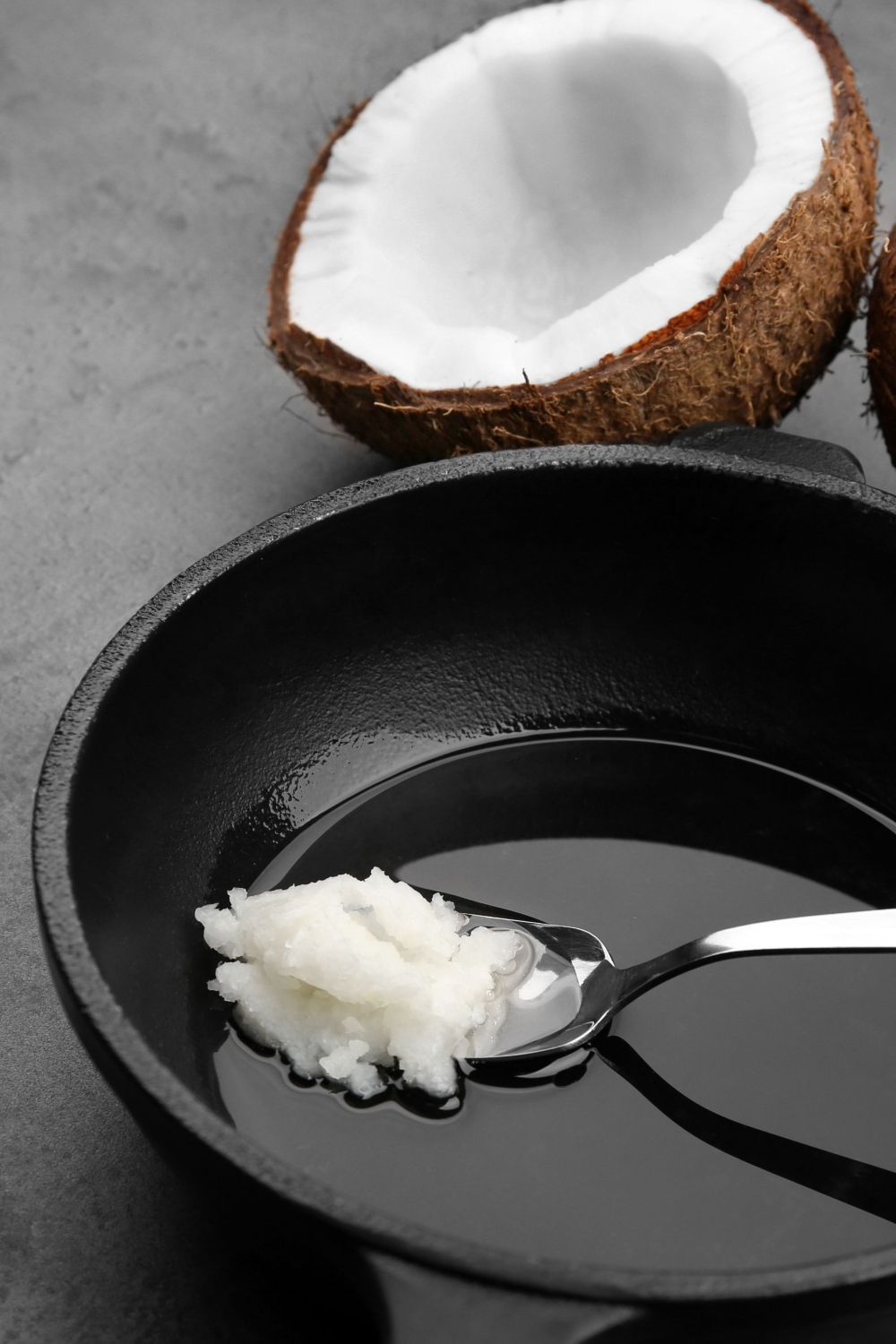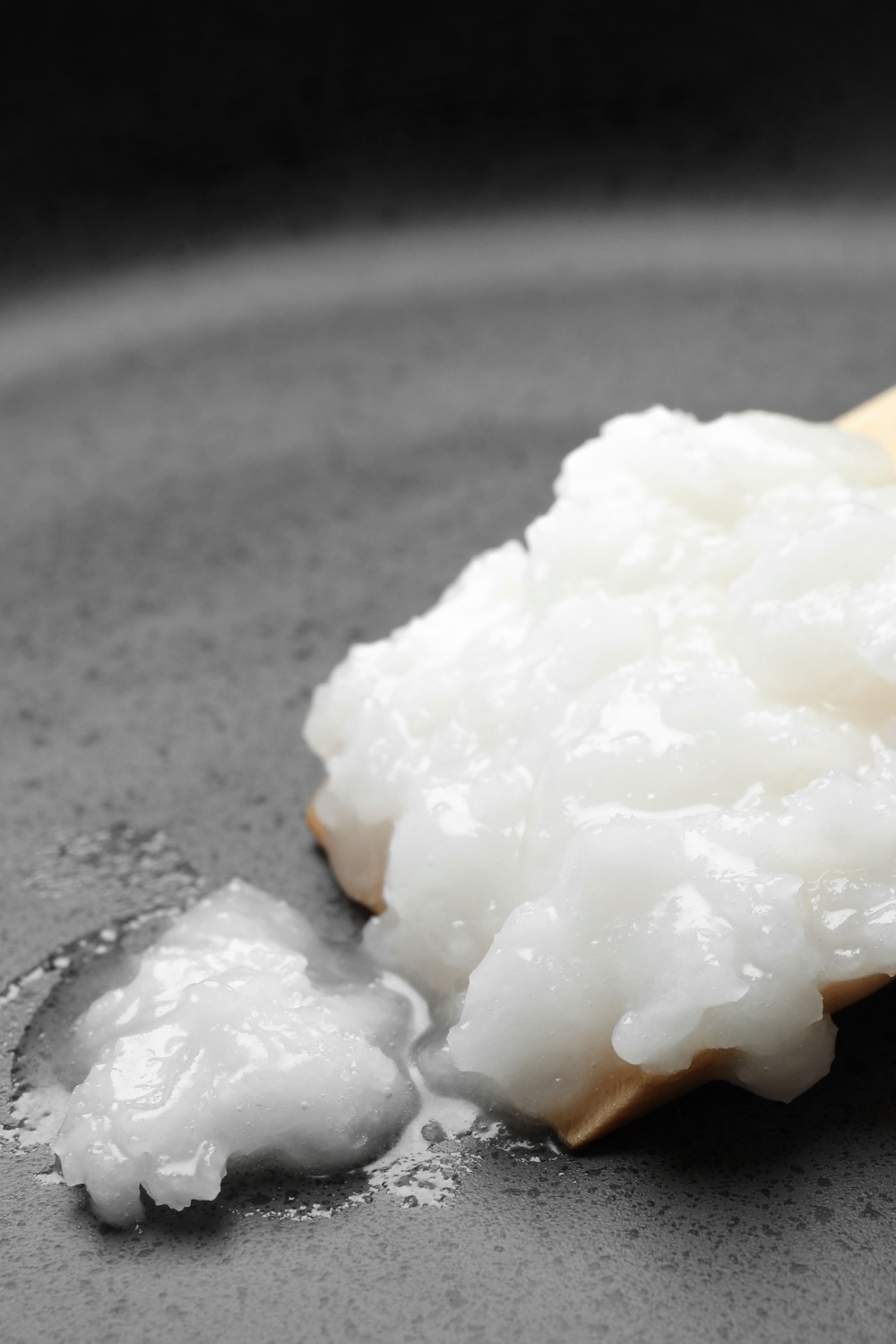Whether you are making baked goods, sweet treats, or some delicious savory dish, or you just want to soften your hair or skin and make it more shiny, coconut oil comes into play.
Also referred to as coconut butter, coconut oil is a type of edible oil that is obtained from coconut palm fruit. It is extremely versatile in the kitchen and, because of that, many home cooks use it.
Unfortunately, many people do not know how to use it the right way. In some cases, you can use it in its solid form, but many other times you will need to melt it first.
But how to melt coconut oil the right way? There are 4 main ways to do that, and this article is here to explain to you how to go through the process properly.
How To Melt Coconut Oil? 4 Best Methods
There are a few ways to properly melt your coconut oil. Which one you choose, mainly depends on your time frame and the end result.
However, I have to emphasize that all of these methods have their pros and cons, so it is up to you to decide which one you will choose. Of course, I will try my best to help you with that.
1. Hot Water

From my experience, this is definitely the best method when it comes to melting coconut oil. You don’t need some specialized equipment and you can easily and quickly melt a large amount of coconut oil.
Actually, this method is ideal if you want to melt a whole jar at once. The process is simple.
First, fill up a sink, pot, or bowl with hot water, ensuring that it is filled enough so that the container with coconut oil can be totally submerged. The water doesn’t have to be boiling hot, but the warmer, the better.
After the water is prepared, transfer the coconut oil to an airtight container, zip-lock bag, or jar, and place it in the hot water.
If the container is not that heavy and it floats in the water, make sure to put something heavy on the top, so that it stays totally submerged in the hot water.
Although the exact time depends on the exact type of coconut oil, it mostly takes around 1 to 2 minutes for the oil to fully melt. After you are sure that it is done, take the container out and dry it before opening it.
After that, the remaining oil will solidify again. Since this is a relatively low-heat melting technique, it won’t negatively affect the nutrient density of the oil, and the flavor and aroma will stay relatively untouched as well, which is great.
2. Double Boiler
If you ask most bakers and chefs how they melt coconut oil, there is a high probability that they will say that they use the double boiler method, also known as stove top water bath.
As with the previous method, this one also uses a low-heat technique, so the nutrients and flavors are mostly safe. Aside from that, you can melt the exact amount of oil that you want.
But what do you need to do? First, take a pot and put it on the stovetop. Fill it halfway with water and bring the water to a boil.
Afterwards, turn off the heat or set it low. Prepare a heat-resistant bowl, and transfer your preferred amount of coconut oil to it.
Put the bowl in a way that it covers the surface of our saucepan with water. Take note that the saucepan shouldn’t touch the hot water.
Once you do this, the heat from the hot water will slowly start to penetrate through the material of the bowl, gradually liquifying your coconut oil.
If you turned off the heat, this should take about 10 minutes. On the other hand, if you kept it on low heat, it should be melted within 5 minutes.
It is always better to turn the heat off because you are ensuring that nutrients and flavor are safe. However, if you are in a hurry, you can also keep it on low heat, as this won’t do any significant damage.
3. Pan

The pan method is one of those methods that have a lot of benefits when you don’t have a bigger picture. Namely, it is quite simple and very quick.
Aside from that, if you are frying or sauteing some food, and planning to use coconut oil, you can do that easily since the oil is already in a pan.
All you need to do is to measure out the amount of coconut oil you need and transfer it to the pan. When measuring, you can use a measuring spoon.
Pack the coconut oil tightly and smooth off the edges when being measured to get the most precise amount.
After you get the right measure, transfer the coconut oil to the pan and put the pan on the stovetop. Heat it so that the coconut oil can melt.
As you can see, the process is simple and quick, and you can use it to melt the amount you want. The problem with this method is that it requires high heat.
So your coconut oil will be melted fast, but it will be left without many nutrients, as well as flavor and aroma to some extent.
Based on this, I wouldn’t recommend this method, but some people still use it, especially when making baked goods where the amount of nutrients is not so important.
4. Microwave
A microwave is a kitchen appliance that is capable of doing many things, including defrosting chicken in the microwave, melting cheese, etc.
However, it is not a coincidence that I put the microwave method as the last one on my list. As with the previous one, this method also tends to destroy many precious nutrients in the oil, and the damage can be even more severe.
Aside from that, the lavor and aroma will evaporate for sure, and you will end up with an oil that does not taste good. However, if you really want to use the microwave, I will explain what you need to do, and how to minimize the negative effects.
The good thing about microwaves is that you can melt any amount of coconut oil. You just need to measure it by using a measuring cup or spoon.
After you do that properly, transfer it from the measuring cup to a microwave-safe dish and cover with the microwave lid in order to keep your kitchen appliance clean.
You can microwave it in 10-second intervals and it will take about 45 seconds to melt ½ cup of oil.
However, I would recommend that you use the defrosting setting (the lowest microwave setting) and microwave your coconut oil slowly. Although this won’t entirely protect it from losing nutrients and flavor, it will certainly minimize the negative effects.
How To Naturally Melt Coconut Oil?

Although I would say that the water bath method is a natural way to melt coconut oil, it is mostly not classified like that.
Instead, the most natural way to melt coconut oil is to put it somewhere outside, i.e., at room temperature. However, since coconut oil melts at 75°F or 24°C, this is not always possible.
Namely, on cold winter days, rarely the temperature is above 60°F, and this temperature is not nearly enough to do the job. Placing the coconut oil jar near a warm source, such as a sunny windowsill, is ideal.
The ambient heat will slowly warm the oil, causing it to melt over time. Through this process, it won’t lose its beneficial nutrients, and its recognizable flavor and aroma will be retained as well.
However, as I already said, this is not always possible, so the explained methods are sometimes a necessity.
Is It Safe To Melt Coconut Oil Multiple Times?
If you go through the process properly every time, melting coconut oil repeatedly won’t do any significant harm, i.e., it will certainly be safe for consumption.
However, I have to emphasize a few things here. First, you have to know that, although it will still be safe, your coconut oil will lose some nutrients and quality in general, especially f you melt it frequently over higher heat.
This is especially the case with melting it in a pan or in the microwave. So, if you are planning to repeat this procedure, it is best to avoid these two methods, or simply melt your coconut oil in smaller portions.
Another potential problem can be the texture of solid coconut oil once you repeatedly melt it. Coconut oil can easily develop a grainy texture, due to the structural changes of some of its fatty acids.
Again, this is especially the case with methods that use high heat to melt the oil, like for example the pan method. So, avoid using the pan method if you are planning to resolidify your coconut oil.
The good news is that, once you remelt coconut oil, you will have a completely smooth liquid once again.
How To Keep It Liquified?

The most obvious way to keep coconut oil in a liquid state is to keep it in a warm place, i.e. above 75°F. However, when you do that, it is important to keep it away from direct sunlight or any other strong heat source. Signs of coconut oil spoilage are mold, a yellow tint, or “off” odors or flavors, according to the Harvard T. H. Chan.
If you are in the middle of winter or if you just can not find a place that has these conditions, another way to keep your coconut oil liquified is to place the container on a heating pad.
Just make sure that the heating divice has a low heat setting, as excessive heat can degrade its quality. Regularly check the temperature to prevent overheating as well.
Also, you can always warm a spoon or knife under warm water to melt it, if you only need a small amount of liquid coconut oil. This will transfer some heat to the oil, making it easier to use in its liquid form.
Another way is to buy a good liquid oil dispenser and transfer your melted coconut oil into it. It can help keep it in a liquid state and make it easier to use. Just look for a dispenser that protects the oil from exposure to air and light to preserve its quality.
Finally, you can add some ingredients like beeswax or shea butter, or use emulsifiers such as lecithin or xanthan gum (or some of xanthan gum substitutes), as they are able to do this job as well.
Is It Necessary To Melt Coconut Oil For Baking?
Since many people tend to use coconut oil for baking various delicious treats, many related questions arise.
Does baking require liquified coconut oil? Well, in most cases, it does. However, not in all cases.
For example, if you want to make pie dough, you will need solid coconut oil to get a flaky crust.
On the other hand, if you are baking roasts, like roast potatoes for example, you will need to melt your coconut oil.
In some cases, more precisely when the recipes require, neither solid nor liquified coconut oil would work. You will need something between those two states. In the culinary world, we simply call it “softened coconut oil”.
Softened coconut oil has a somewhat milkshake-like consistency, i.e. it is soft and fluffy without being runny or rock-solid.
To achieve this, you simply put the oil inside a bowl and whip using a stand mixer or electric hand mixer, anywhere between 5-15 minutes, depending on your preferences.
This will do the job well.


